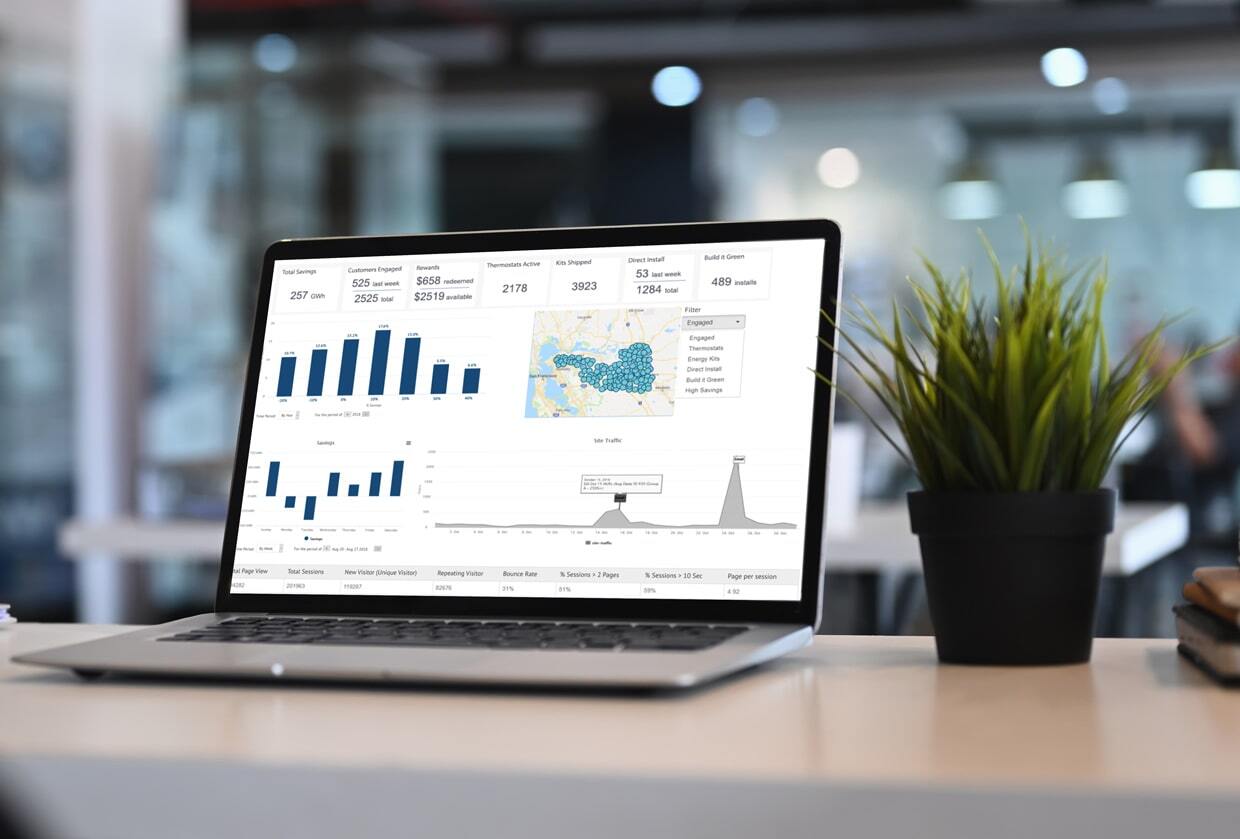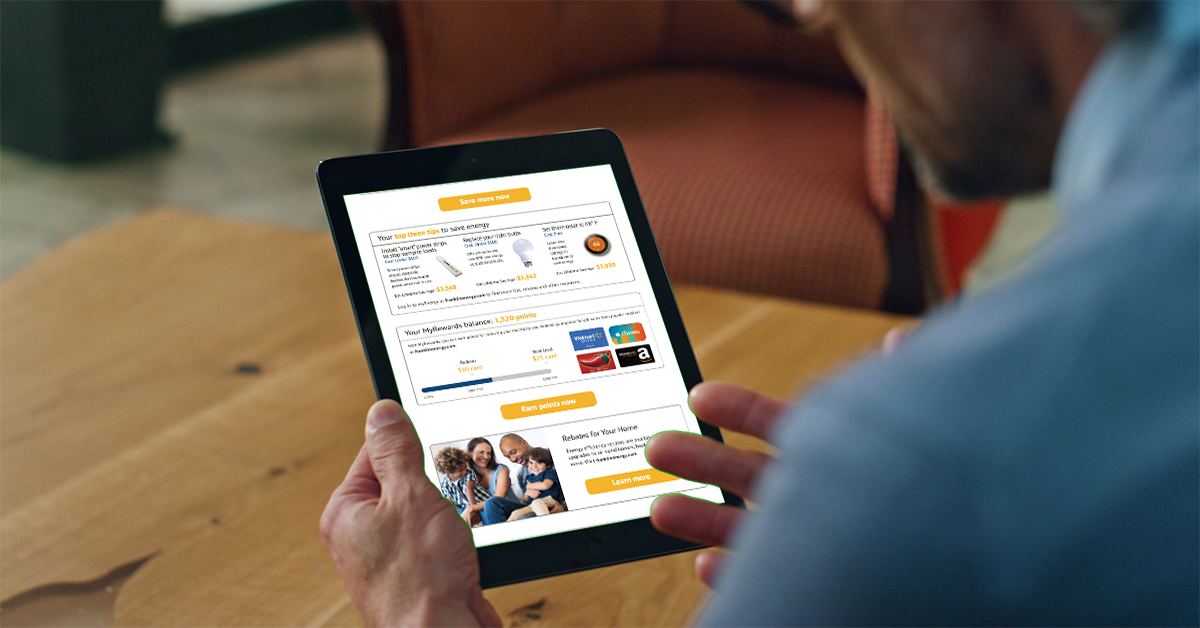The Hidden Hard Work Behind DER Marketing: Why Promising Tech Doesn’t Sell Itself
October 21, 2025 •Laina McQueen

In the world of distributed energy resources (DERs)—from solar and battery storage to demand response programs, smart thermostats, and grid-connected EV chargers— technology often steals the spotlight. But as any marketer or program director knows, superior technology alone doesn’t guarantee adoption.
The real battleground isn’t just in what these resources can do for the grid—it’s in how we sell their promise and how we overcome the psychological, behavioral, regulatory, and institutional friction that keeps them from scaling.
As we lean harder into the clean energy transition, utilities, energy providers, and virtual power plant (VPP) operators must recognize that marketing DERs to consumers isn’t about marketing a single thing. It’s about communicating a portfolio of technologies, programs, and participation models—each with distinct value propositions, motivations, and barriers.
How Thoughtful Marketing Turns Complexity into Opportunity
Marketing DERs effectively isn’t about flashy creative—it’s about precision, patience, and empathy. Whether it’s enrolling a homeowner in a demand response program, encouraging a business to install on-site battery storage, or helping customers understand smart thermostat controls, the same fundamentals apply: build trust, anticipate friction, and educate progressively.
Guiding Principles:
Lead with benefit, not tech. Start with what customers care about—reliability, cost protection, control—before explaining how the technology or program delivers it.
Show, don’t just tell. Use real local examples: solar payback dashboards, EV charging visuals, demand response success stories.
Educate in phases. Don’t try to teach everything all at once. Build awareness → understanding → enrollment.
Design a funnel. Move audiences from awareness to action through nurture and education—not one-shot campaigns.
Embed trust and transparency. Be upfront about caveats and limitations. Control, privacy, and override rights must be central.
Leverage partners and validators. Third-party endorsements—vendor co-branding, local governments, and community groups—amplify credibility.
Segment and personalize. Tailor by audience and behavior: small business vs. residential, renters vs. owners, high-peak vs. low-use customers.
Iterate and listen. Monitor funnel drop-offs, survey early adopters, and A/B test message framing continuously.
These principles are the “how” behind DER marketing—and they matter even more once you understand why DERs are such a unique challenge to market.
Why DERs Are Hard to Market (Even When the Business Case Is Strong)
1. Awareness Gap & Conceptual OverloadMost consumers—residential or commercial—haven’t heard of DERs as a category. The term itself feels abstract. Even more tangible options like battery storage or demand response can sound technical or confusing.
Marketing implication: Carry the burden of definition. Simplify. Translate each technology or program into relatable benefits (your home’s energy, on your terms).
2. Fear of Complexity, Loss of Control & Hidden Risk
Telling a homeowner that their thermostat or battery may be controlled remotely can spark fear. “Will I lose power? Pay more?”
Marketing implication: Transparency is everything. Communicate override rights, safety guarantees, and clear participation boundaries up front.
3. Bill Impact Uncertainty & What If I Lose?
DER economics vary by household load shapes, rate plans, and usage habits. That uncertainty breeds skepticism.
Marketing implication: Avoid generic claims. Offer personalized tools—shadow billing, payback calculators, load-shift visuals—to help people see their own outcomes.
4. Perceived Exclusivity & Equity Gaps
Early DER adoption has skewed toward higher-income, tech-savvy customers.
Marketing implication: Build inclusive narratives and partnerships that extend benefits to all segments—renters, low-income customers, and underserved communities.
5. Confusing Brand Ecosystem
Utilities, aggregators, and vendors often send mixed messages about “who’s in charge” of DER participation.
Marketing implication: Position DERs as a collaborative investment—customer and utility working together toward reliability, savings, and sustainability.
6. Internal Siloes & Fragmented Messaging
Within utilities, DER efforts can be split between rate design, demand response, and program marketing—each with separate messaging.
Marketing implication: Align voice and campaigns across initiatives. Customers experience your brand as one entity, not as departments.
7. Regulatory Constraints
Utility marketing operates under strict compliance boundaries.
Marketing implication: Partner early with regulatory and legal teams to ensure defensible messaging. Use transparent framing (“in most cases,” “modeled scenarios”) and third-party validation.
8. High Acquisition Cost & Long Decision Cycles
Convincing someone to enroll in a demand response program or install battery storage is a longer, higher-touch process.
Marketing implication: Treat marketing as a journey, not a one-time conversion. Use referral programs, nurture sequences, and education-based content to lower friction.
9. Scaling Personalization Without Overstretching Resources
Scaling from dozens of early adopters to thousands of customers strains marketing capacity.
Marketing implication: Use automation and behavioral targeting to deliver micro-messages (“shift one appliance to save $X”).
10. Early Pilot Disappointments
Negative pilot experiences—unmet savings or clunky interfaces—can slow adoption across entire markets.
Marketing implication: Under promise, overdeliver. Track satisfaction, close feedback loops, and turn early adopters into ambassadors.
Final Thought: The Secret Ingredient Is Patience + Precision
If DERs were easy to market, we’d already see mass adoption. The sticking points are rarely technical—they’re human, institutional, and perceptual. Whether you’re promoting solar plus storage, smart thermostats, or demand response, the success of your program will depend less on what the technology does and more on how well you can tell its story.At Franklin Energy, we believe the marketing behind clean energy is just as important as the engineering. We welcome conversations with utilities, DER providers, and VPP operators on how to design marketing that builds trust, drives participation, and helps scale DERs responsibly.

.png)
.png)


.png)
